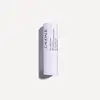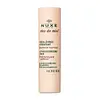What's inside
What's inside
 Key Ingredients
Key Ingredients

 Benefits
Benefits

 Concerns
Concerns

 Ingredients Side-by-side
Ingredients Side-by-side

Caprylic/Capric Triglyceride
MaskingRicinus Communis Seed Oil
MaskingCera Alba
EmollientC10-18 Triglycerides
EmollientButyrospermum Parkii Butter
Skin ConditioningMacadamia Ternifolia Seed Oil
EmollientCopernicia Cerifera Cera
EmollientHydrogenated Castor Oil
EmollientPalmitoyl Grape Seed Extract
Skin ConditioningTocopheryl Acetate
AntioxidantLimonene
PerfumingLinalool
PerfumingLeontopodium Alpinum Flower/Leaf Extract
Skin ConditioningGeraniol
PerfumingParfum
MaskingCaprylic/Capric Triglyceride, Ricinus Communis Seed Oil, Cera Alba, C10-18 Triglycerides, Butyrospermum Parkii Butter, Macadamia Ternifolia Seed Oil, Copernicia Cerifera Cera, Hydrogenated Castor Oil, Palmitoyl Grape Seed Extract, Tocopheryl Acetate, Limonene, Linalool, Leontopodium Alpinum Flower/Leaf Extract, Geraniol, Parfum
Octyldodecanol
EmollientButyrospermum Parkii Butter
Skin ConditioningMacadamia Integrifolia Seed Oil
Skin ConditioningPolyethylene
AbrasiveGlyceryl Behenate
EmollientPrunus Amygdalus Dulcis Oil
Skin ConditioningOleic/Linoleic/Linolenic Polyglycerides
EmollientOryza Sativa Cera
Skin ConditioningCera Alba
EmollientHelianthus Annuus Seed Oil Unsaponifiables
EmollientHydroxystearic/Linolenic/Oleic Polyglycerides
EmollientJojoba Esters
EmollientCitrus Grandis Peel Oil
MaskingOryza Sativa Bran Oil
EmollientSafflower Oil/Palm Oil Aminopropanediol Esters
Skin ConditioningTocopheryl Acetate
AntioxidantTocopherol
AntioxidantButyrospermum Parkii Butter Extract
Skin ConditioningCitrus Limon Peel Oil
MaskingArgania Spinosa Kernel Oil
EmollientMel
EmollientHordeum Vulgare Cera
EmollientWater
Skin ConditioningPEG-8
HumectantCitric Acid
BufferingLimonene
PerfumingCitral
PerfumingLinalool
PerfumingGeraniol
PerfumingOctyldodecanol, Butyrospermum Parkii Butter, Macadamia Integrifolia Seed Oil, Polyethylene, Glyceryl Behenate, Prunus Amygdalus Dulcis Oil, Oleic/Linoleic/Linolenic Polyglycerides, Oryza Sativa Cera, Cera Alba, Helianthus Annuus Seed Oil Unsaponifiables, Hydroxystearic/Linolenic/Oleic Polyglycerides, Jojoba Esters, Citrus Grandis Peel Oil, Oryza Sativa Bran Oil, Safflower Oil/Palm Oil Aminopropanediol Esters, Tocopheryl Acetate, Tocopherol, Butyrospermum Parkii Butter Extract, Citrus Limon Peel Oil, Argania Spinosa Kernel Oil, Mel, Hordeum Vulgare Cera, Water, PEG-8, Citric Acid, Limonene, Citral, Linalool, Geraniol
 Reviews
Reviews

Ingredients Explained
These ingredients are found in both products.
Ingredients higher up in an ingredient list are typically present in a larger amount.
This ingredient is also known as shea butter. It is an effective skin hydrator and emollient.
Emollients help soothe and soften your skin. It does this by creating a protective film on your skin. This barrier helps trap moisture and keeps your skin hydrated. Emollients may be effective at treating dry or itchy skin.
Shea butter is rich in antioxidants. Antioxidants help fight free-radicals, or molecules that may harm the body. It is also full of fatty acids including stearic acid and linoleic acid. These acids help replenish the skin and keep skin moisturized.
While Shea Butter has an SPF rating of about 3-4, it is not a sunscreen replacement.
Shea butter may not be fungal acne safe. We recommend speaking with a professional if you have any concerns.
Learn more about Butyrospermum Parkii ButterCera alba is beeswax, or the wax used by bees to make honeycombs. It is a texture-enhancer and emollient. A study from 2003 found beeswax to be a stronger emollient than ingredients such as petroleum jelly.
As an emollient, beeswax helps hydrate the skin by creating a barrier on top. This barrier traps moisture in.
Emulsifiers help prevent ingredients from separating. This helps create consistent texture.
The structure of beeswax is mainly long-chain alcohols and the esters of fatty acids.
There are three types of beeswax: yellow, white, and absolute. Yellow is pure beeswax taken from the honeycomb. White beeswax is created by filtering or bleaching yellow beeswax. Absolute beeswax is created by treating beeswax with alcohol. Beeswax used in cosmetics are purified.
Beeswax has been used throughout history and even in prehistoric times. Some common uses for beeswax still used today are making candles, as a waterproofing agent, and polish for leather.
Learn more about Cera AlbaGeraniol is used to add fragrance/parfum to a product. It is the main component of citronellol. It is a monoterpenoid and an alcohol.
Monoterpenes are naturally found in many parts of different plants.
Geraniol can be found in many essential oils including Rose Oil and Citronella Oil. The scent of Geraniol is often described as "rose-like". Many foods also contain Geraniol for fruit flavoring.
Geraniol can irritate the skin when exposed to air. However, irritation depends on the ability of geraniol to penetrate into the skin. In general, geraniol is not able to penetrate skin easily.
Geraniol is colorless and has low water-solubility. However, it is soluble in common organic solvents.
Like citronellol, it is a natural insect repellent.
2,6-Octadien-1-ol, 3,7-dimethyl-, (2E)-
Learn more about GeraniolLimonene is a fragrance that adds scent and taste to a formulation.
It's found in the peel oil of citrus fruits and other plants such as lavender and eucalyptus. The scent of limonene is generally described as "sweet citrus".
Limonene acts as an antioxidant, meaning it helps neutralize free radicals.
When exposed to air, oxidized limonene may sensitize the skin. Because of this, limonene is often avoided by people with sensitive skin.
The term 'fragrance' is not regulated in many countries. In many cases, it is up to the brand to define this term. For instance, many brands choose to label themselves as "fragrance-free" because they are not using synthetic fragrances. However, their products may still contain ingredients such as essential oils that are considered a fragrance.
Learn more about LimoneneLinalool is a fragrance and helps add scent to products. It's derived from common plants such as cinnamon, mint, citrus, and lavender.
Like Limonene, this ingredient oxidizes when exposed to air. Oxidized linalool can cause allergies and skin sensitivity.
This ingredient has a scent that is floral, spicy tropical, and citrus-like.
Learn more about LinaloolTocopheryl Acetate is AKA Vitamin E. It is an antioxidant and protects your skin from free radicals. Free radicals damage the skin by breaking down collagen.
One study found using Tocopheryl Acetate with Vitamin C decreased the number of sunburned cells.
Tocopheryl Acetate is commonly found in both skincare and dietary supplements.
Learn more about Tocopheryl Acetate